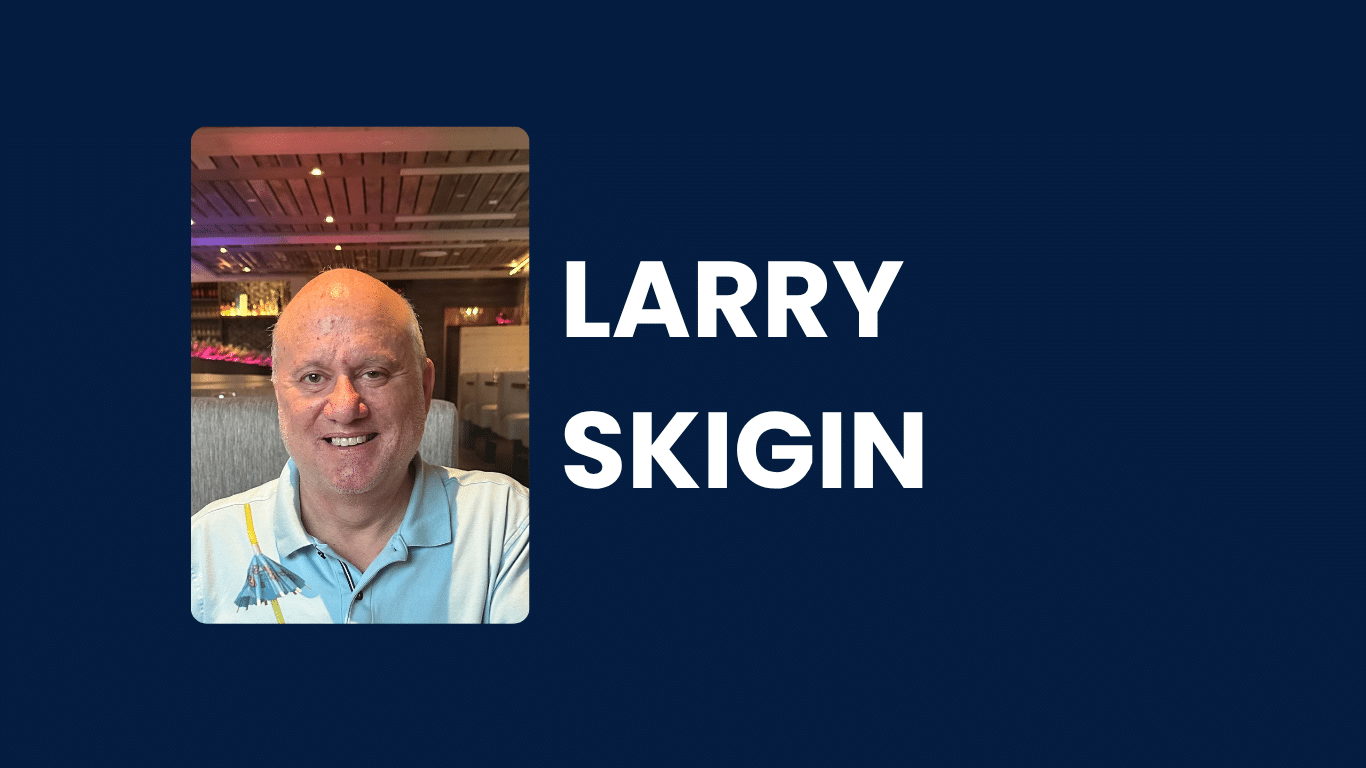Larry Skigin, Glioblastoma Survivor & Advocate
By CISCRP Staff|Oct 16, 2025
By CISCRP Staff|Oct 16, 2025

Larry Skigin, Glioblastoma Survivor & Advocate
In June of 1997, at just 31 years old, Larry Skigin’s life changed in an instant. For several months, he had been dealing with severe headaches but had brushed them off.
“I never thought anything of the headaches at the time. I was very healthy up until that point and rarely got sick,” Larry recalled.
Larry was working as a truck driver in Phoenix when everything shifted. One morning, while driving through a residential neighborhood collecting trash, he suddenly felt a sensation he couldn’t explain.
“There weren’t any obvious symptoms, I just knew something was wrong,” he said.
Moments later, he experienced his first seizure.
“I just started flipping around the front of the truck. It was called a Jacksonian seizure, so I didn’t black out—I was awake the whole time. I felt like I was being electrocuted.”
The seizure led Larry to the hospital, where doctors began the process of diagnosis. Initially, the path forward wasn’t clear. Larry was sent home that day and told he needed a referral for an MRI. His waste management job moved him to work at the dispatch office at a desk until he had a diagnosis and treatment plan in place.
The very next day at his office, Larry had a second seizure.
“I was brought to a different hospital this time, and the doctors rushed me in for a CT scan,” Larry recalls.
The CT scan showed signs of a tumor and Larry was referred to a neurosurgeon for a biopsy. A week later, while his friends and family waited at Barrow Neurological Institute, Larry underwent surgery. Upon waking, he learned he had been diagnosed with Grade 4 Glioblastoma, a highly aggressive brain tumor.
Intensive Treatment Begins
As Larry grappled with the realities of his cancer prognosis, his treatment quickly began.
“We started with daily radiation for five weeks, followed by a procedure called stereotactic radiosurgery, where surgeons use beams to pinpoint a small area and deliver a massive dose of radiation,” Larry explains.
As soon as radiation ended, chemotherapy began. For the next several years, Larry was put on a cocktail of drugs and monitored closely with MRIs for several years. In 2000, an irregular scan raised concerns. Doctors weren’t sure if the spot in Larry’s brain was scar tissue or a new tumor. It turned out to be both.
The year prior, the FDA had approved Gliadel wafers—a treatment for recurrent brain tumors. Larry underwent surgery to embed a small, biodegradable wafer that delivered chemotherapy directly to his brain. For several more years, Larry treated glioblastoma with a combination of Gliadel and other medications—during which his tumor disappeared.
The Role of Research and Medicine
As Larry navigated his treatment, he saw firsthand how advancements in medicine and clinical research shaped his care. While Larry didn’t participate directly in a clinical trial, he benefitted from research every step of the way.
Early on, Larry was offered the opportunity to join a clinical trial for a new treatment, but his fear of receiving a placebo deterred him.
“I chose to take my chances on the standard treatment at that time because I didn’t know very much about clinical trials. It wasn’t explained to me that with cancer, a placebo is usually the standard treatment in comparison to a new drug. I was scared I may end up with no treatment at all which would have killed me,” Larry explains.
Larry’s hesitance is understandable and very common in patients when it comes to considering clinical trial participation. Many patients feel uncomfortable joining trials due to a lack of clear information and education from their doctors.
Long-Term Challenges
Unfortunately, living with and treating an aggressive form of cancer has caused other complications for Larry’s health. The Gliadel procedure led to mobility issues.
“After the surgery, I started tripping over my right toe. Some sort of deficit was happening. Soon I had complete weakness on my right side and drop foot syndrome,” Larry recalls.
Larry was fitted with braces and a cane which he still relies on.
“Overcompensating by balancing on my left side for years after the issues with my right leg caused more damage. In 2020, I went in for routine back surgery, but it only made things worse,” Larry says.
The surgery had complications that resulted in bilateral foot drop. Rather than going home, Larry ended up in a rehabilitation program for a year, regaining his strength and relearning how to walk.
His immune system was also weakened by radiation and chemotherapy, leading to infections like MRSA and C. diff. The persistent cancer impacted his career as well.
“I was in and out of the hospital so often that a full-time job was impossible for me,” Larry explains. Over the years, Larry has worked part-time when he could, but his mobility issues made daily tasks difficult.
Living with Gratitude
The average life expectancy for someone with Grade 4 Glioblastoma is about 18 months. Nearly 28 years after his diagnosis, Larry has the unique experience of surviving a fatal disease that most do not. Today, he is 25 years cancer-free.
“I’ve met many others with the same cancer as myself who died within a year,” Larry says. “It’s hard to understand why I’m here when so many others didn’t make it.”
One thing Larry knows for certain: the support he received from his family and friends has been instrumental in keeping him going.
Despite the harsh realities of glioblastoma and the long-term effects of treatment on his health, Larry has remained optimistic through it all.
“I believe there is a mental component that comes with beating cancer, in addition to medicine,” Larry explains. “For me, I had to believe I would survive no matter what. It kept me going through treatment—I never gave up.”